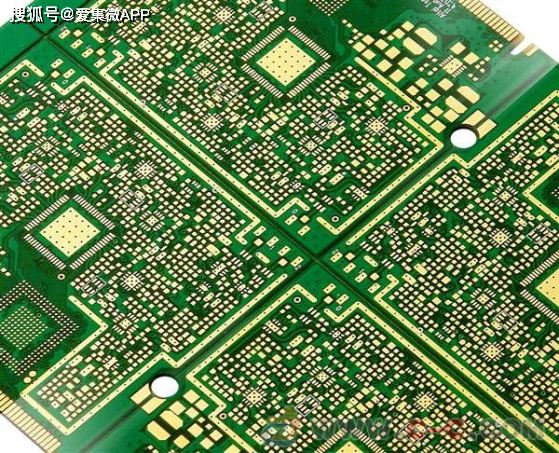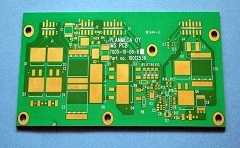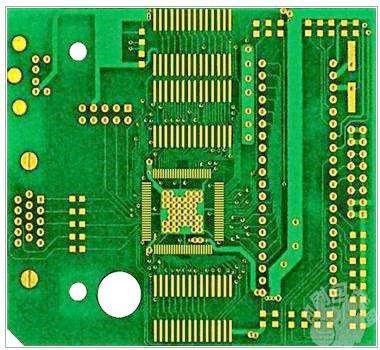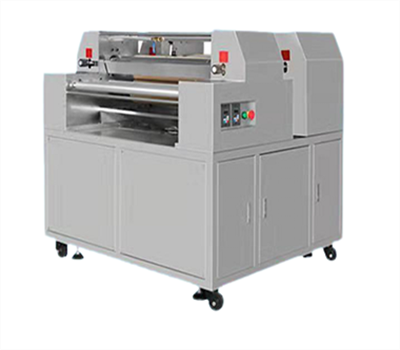I, Harm of PCB board deformation
In the automatic surface mounting line, if the circuit board is not smooth, it will cause inaccurate positioning, components can not be inserted or mounted to the hole and surface mounting pad of the board, and even damage the automatic inserting machine. The circuit board loaded with components is bent after welding, and the component feet are difficult to cut neatly. The board can not be installed into the box or machine, the socket, so the assembly plant encountered plate warping is also very troublesome. At present, surface mounting technology is developing towards high precision, high speed and intelligent direction, which puts forward higher flatness requirements for PCB board as the home of various components.
The IPC standard specifically states that the maximum allowable deformation for PCB boards with surface mount devices is 0.75% and the maximum allowable deformation for PCB boards without surface mount devices is 1.5%. In fact, in order to meet the needs of high precision and high speed mounting, some electronic assembly manufacturers have more stringent requirements for deformation, such as our company has a number of customers to allow the maximum deformation of 0.5%, and even some customers require 0.3%.
PCB board is composed of copper foil, resin, glass cloth and other materials, all of which have different physical and chemical properties. After pressed together, thermal stress residue will inevitably occur, resulting in deformation. At the same time in the process of PCB processing, through high temperature, mechanical cutting, wet process and other process, will produce a significant influence on the plate deformation, in short can cause of PCB deformation is complicated, how to reduce or eliminate caused by different material properties and processing, the deformation of the PCB manufacturers one of the most complex problems.
II, Cause analysis of PCB board deformation
The deformation of PCB board needs to be studied from the aspects of material, structure, graphic distribution, processing process and so on. This paper will analyze and elaborate the possible causes of the deformation and improvement methods.
The uneven area of the copper surface on the circuit board will worsen the bending and warping of the board.
On the general circuit board design has a large area of copper foil for grounding, sometimes Vcc layer has designed a large area of copper foil, when these large areas of copper foil can not evenly distribution in the same circuit boards, can cause uneven heat and cooling speed, circuit boards, of course, also can heat bilges cold shrink, If the expansion and contraction can not be simultaneously caused by different stresses and deformation, at this time if the temperature of the board has reached the upper limit of Tg value, the board will begin to soften, resulting in permanent deformation.
The connecting points (ViAs) of the layers on the board limit the expansion and contraction of the board.
Nowadays, the circuit board is mostly multilayer board, and there will be rivets like connection point (VIAS) between the layer and the layer, the connection point is divided into through hole, blind hole and buried hole, where there is a connection point will limit the effect of plate expansion and contraction, will also indirectly cause plate bending and plate warping.
1.The weight of the circuit board itself can cause the board to sag and deform
2.The depth of V-cut and the connecting strip will affect the deformation of the panel
3.Pressing material, structure, graphics will cause deformation to the plate
4.Deformation caused by PCB board processing
III, PCB board warping deformation prevention
Circuit board warping has a great influence on the production of printed circuit board. Warping is also one of the important problems in the process of circuit board manufacturing. The board loaded with components is bent after welding, and the component feet are difficult to be neat. The board can not be installed in the box or the machine socket, so the circuit board warping will affect the normal operation of the whole process. At present, the printed circuit board has entered the era of surface mounting and chip mounting. Which is why we need to find out why the Halfway gang warped.
1.Engineering design: Matters needing attention in PCB design: a. The arrangement of semi-solidified sheets between layers should be symmetrical B. Multilayer core and semi-cured sheets shall be made from the same supplier. C. The line graphic areas of outer plane A and B should be as close as possible.
2.Drying plate before blanking: copper plate blanking before drying plate (150 degrees Celsius, time 8±2 hours) the purpose is to remove the moisture in the plate, at the same time make the resin in the plate completely solidified, further eliminate the remaining stress in the plate, which is helpful to prevent the plate warping.
3.The warp and weft direction of the semi-cured film: the warp and weft shrinkage rate of the semi-cured film after lamination is not the same, the warp and weft direction must be separated when feeding and laminating. Otherwise, after laminating, it is easy to cause the finished plate to warp, which is difficult to correct even if the drying plate is under pressure.
4.Lamination in addition to stress: after the completion of multi-layer hot pressing and cold pressing out, cut or milling off the burr, and then flat in the oven 150 degrees Celsius bake 4 hours, in order to make the plate of stress gradually released and make the resin completely solidified, this step can not be omitted.
5.Thin plate electroplating needs to be straightened: 0.4 ~ 0.6mm ultra-thin multilayer plate for plate surface electroplating and graphic electroplating should be made special clamping roller, in automatic electroplating line after clamping thin plate on the flying bar, with a round stick to the whole flying bar clamp roller string, so as to straighten all the boards on the roller, so that the electroplated board will not be deformed. Without this measure, the thin plate would bend and be difficult to repair after plating a copper layer of 20 to 30 microns.
6.Cooling of the board after hot air leveling: printed board hot air leveling is subjected to high temperature impact of solder tank (about 250 degrees Celsius), and after being removed, it should be placed on flat marble or steel plate for natural cooling, and then sent to the back processor for cleaning. This is good for the board against warpage.
7.Warpage handling: in a well-managed plant, printed boards are checked for 100% flatness during final inspection. All unqualified boards will be picked out and placed in the oven, baked at 150 degrees and under heavy pressure for 3 ~ 6/ h, and cooled naturally under heavy pressure, and then the board is taken out by pressure system. so it can save part of the board, some boards need to make two to three times of drying pressure ability leveling.








 Nov. 17, 2021
Nov. 17, 2021 




